Everything you’ve ever wanted to know about our always delicious, sometimes funny-looking produce.
We get it—the world of ugly produce is a wild and surprising landscape. There’s a lot of misinformation out there about what happens in the food supply chain. But as soon as you know the backstory of our delicious little misfits, you’ll probably feel a lot better about taking part in our mission to break the cycle of food waste.
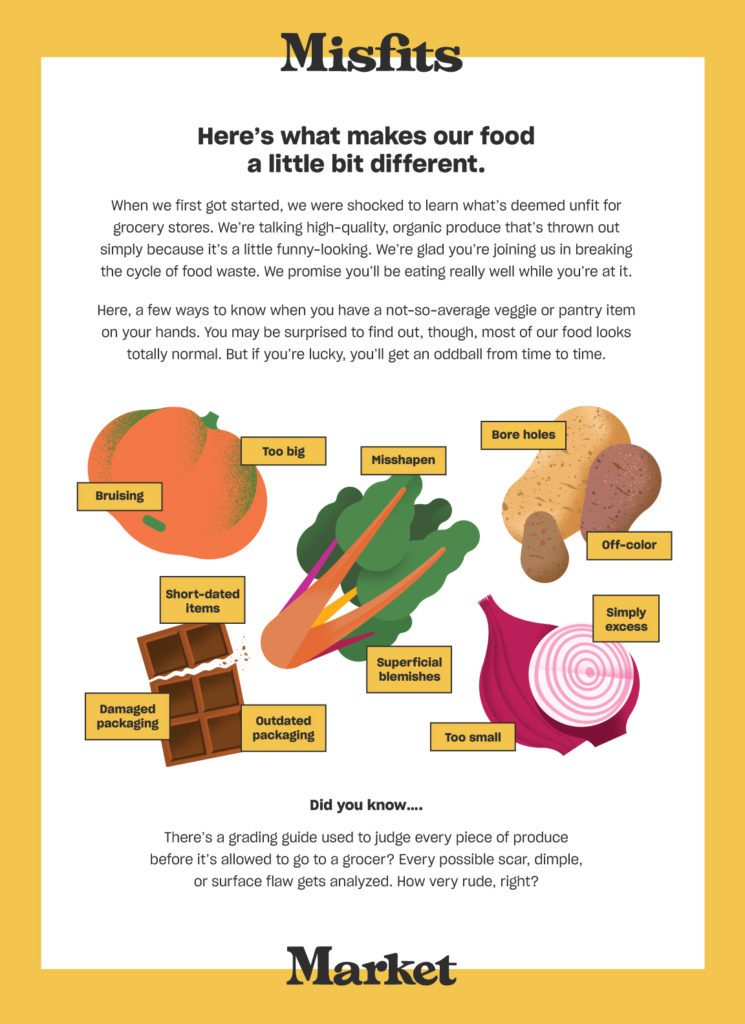
Hungry for more? Some of our most common rescue reasons include:
- Discoloration
- Excess inventory
- Packaging changes
- Nearing best-by dates
- Items that are too big or too small
- Leftover ends & pieces from the manufacturing process
Check out a few, more specific, examples of flavorful produce finds that didn’t fit in at the grocery store.
They had superficial blemishes
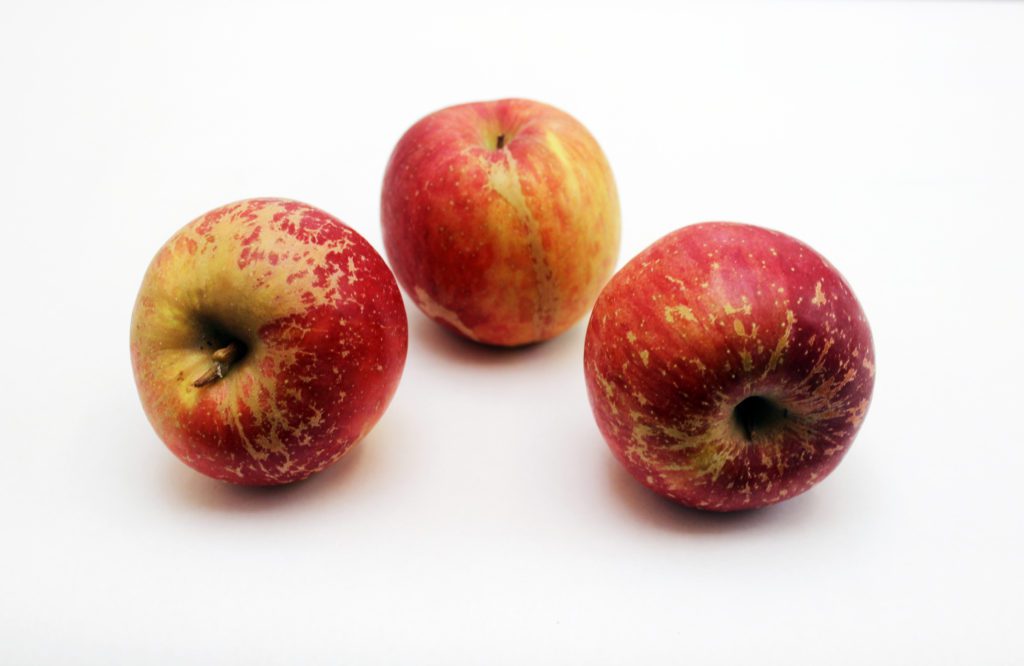
If you ask us, the striations on these apples make them even more beautiful than normal. But with those beauty marks, their chances of making it to the grocery store spotlight are basically nil.
Why? When it comes to appearance, the supermarket powers-that-be are harsher than a judgy middle schooler. Did you know that each piece of produce that’s grown or imported to the U.S. has a grading guide (some are in excess of 30 pages!)? It lists out every possible scar, dimple, or other surface flaw that might make a grocer reject it. Luckily, we see beyond skin deep.
Take these scarred avocados, for example. They never even made it to a grocery store because the growers we sourced them from knew they’d be rejected outright.
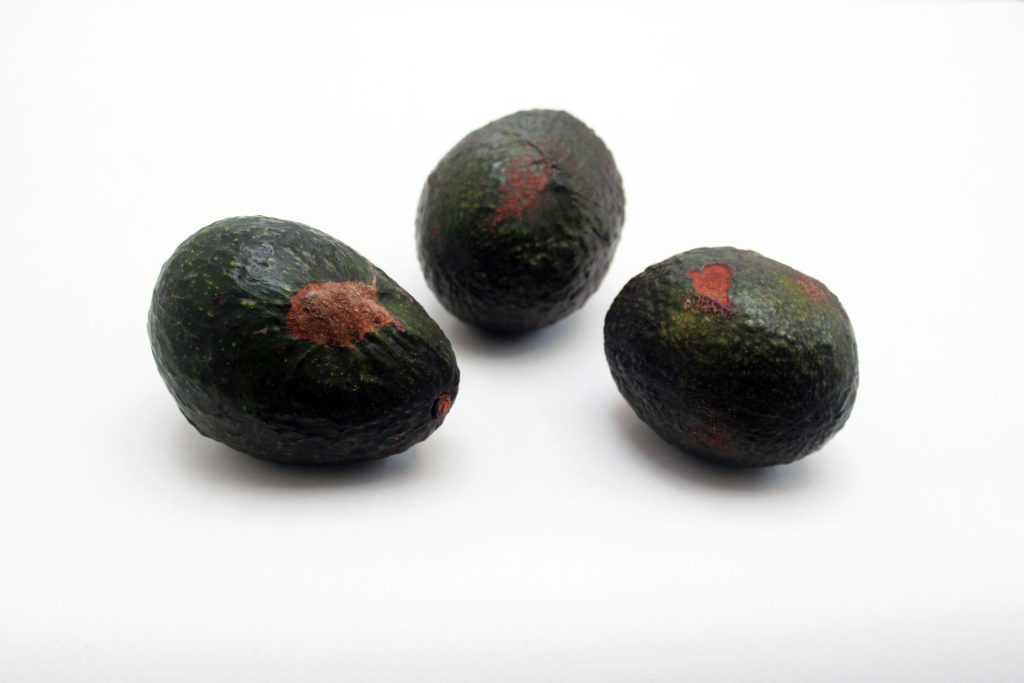
But peel back the skin, and you’ll find the rough patch was limited to the surface. Nothing but deliciousness below!
They were too small
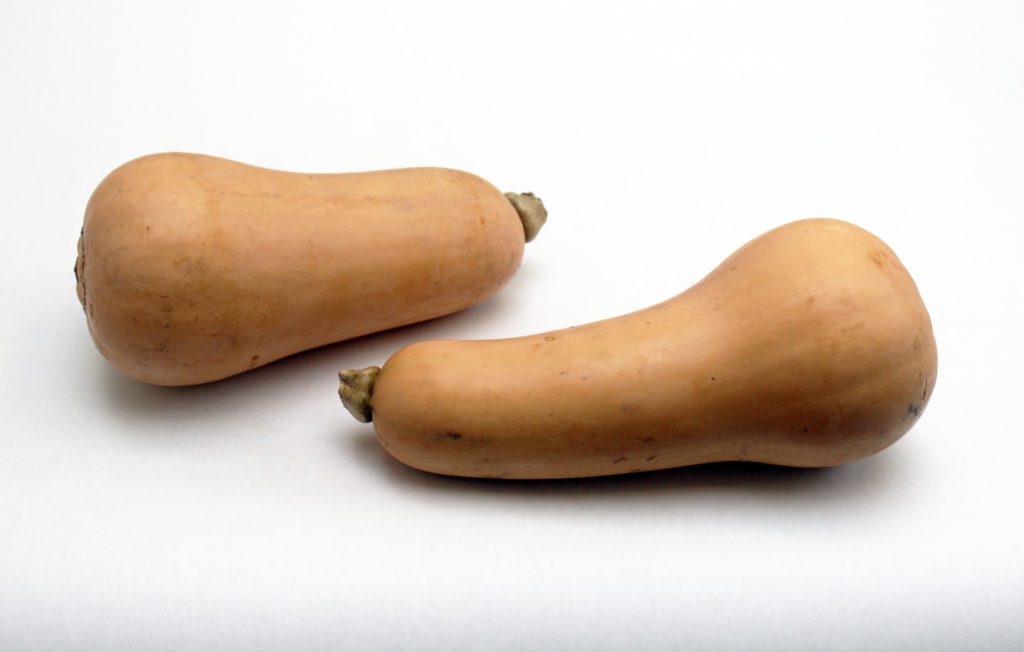
When you see a diminutive butternut squash or too-cute undersized onion, it’s fair to assume that grocers just overlooked them.
Part of it has to do with consumer bias in our super-size-me culture. When we see something small on grocery shelves, we perceive that we’re not getting a good value.
But those ’lil guys are often great for snacking, and smaller portions help ensure the food doesn’t go to waste when it’s in your home either. Bonus: Because we source organic produce, many of the items don’t need to be peeled, so you get even more bang for your buck.
They were too big
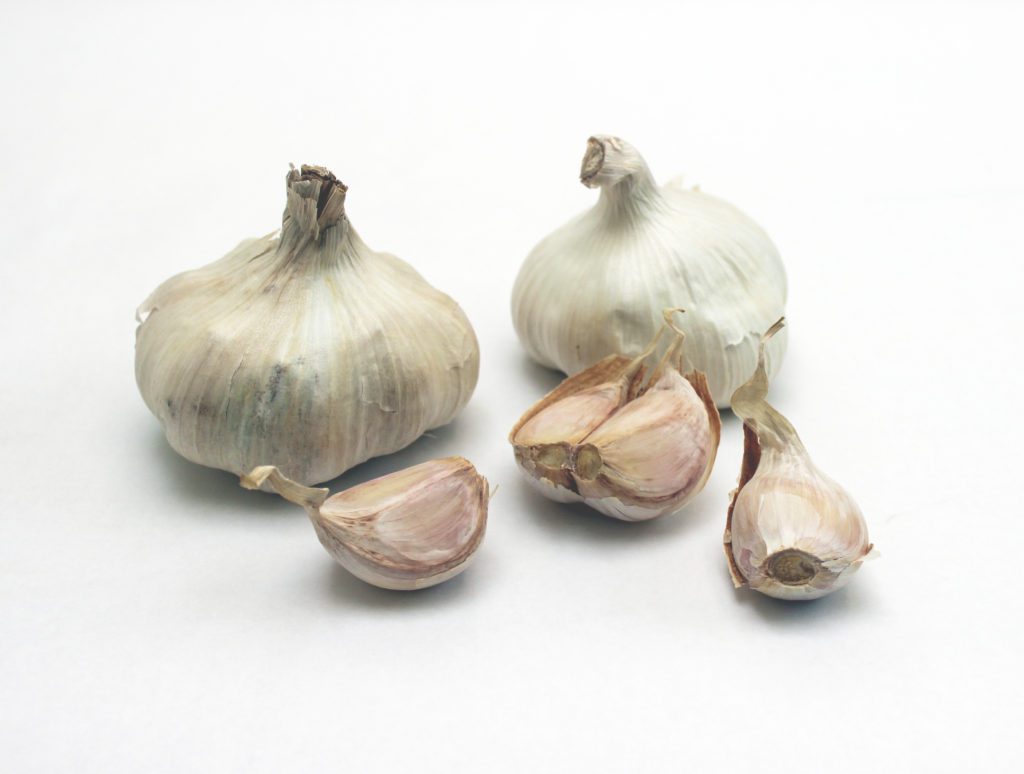
These jumbo garlic are large and in charge by definition. So what’s the big deal?
Size matters on both ends of the spectrum, and grocery stores believe there can be too much of a good thing. Not that we agree. If you’ve ever gotten one of those sweet potatoes that are the size of a toddler, you’ve hit the jackpot. Those suckers make mean fries!
They were misshapen
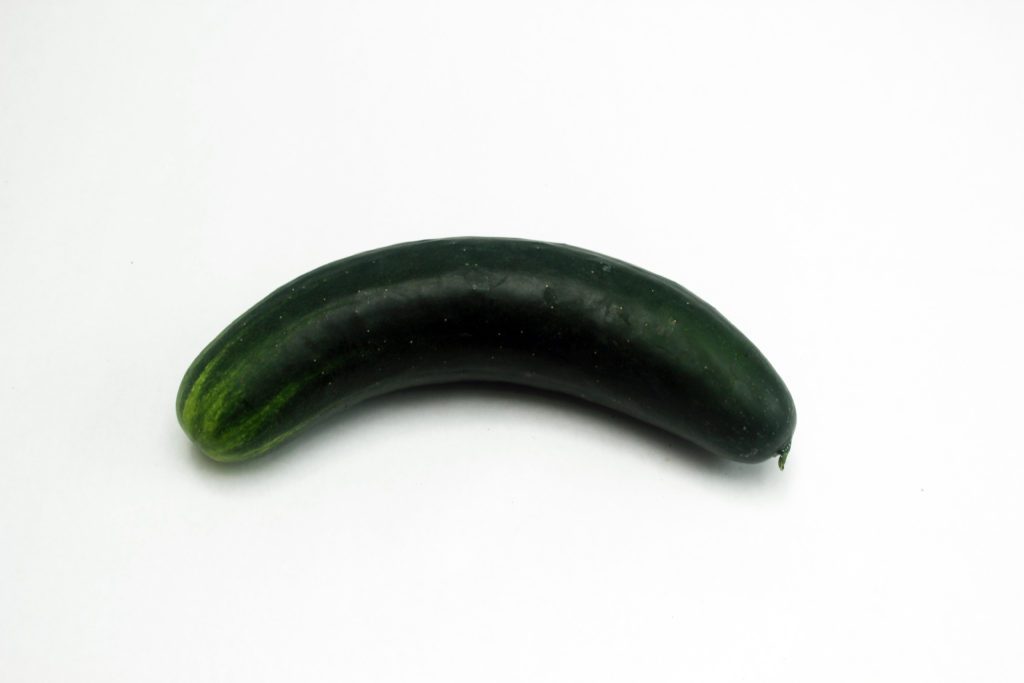
Hugging carrots and curvy cucumbers may make awesome Insta fodder, but they make grocers see red. That’s because it’s difficult to present shapelier goods that mess with a linear aesthetic they’re trying to achieve on displays. We, however, don’t discriminate. Bring on the veggies in every form!
Sometimes it’s not shape that’s the exact issue, but a lack of uniformity. Of these cabbages, one has an abundance of leaves, the other is slightly more svelte.
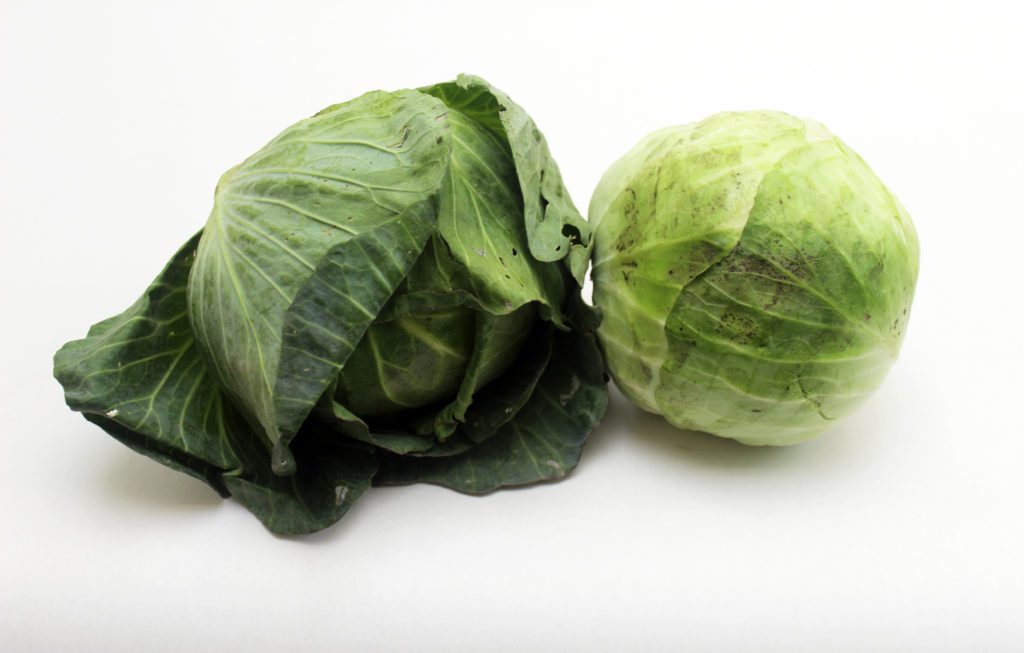
When they aren’t standardized, it’s more difficult for growers to sort and pack into a box to guarantee stores a specific head count. In some cases, too much variety may be reason enough to leave food on the field. We take all comers, then leave the trimming to the customers.
They were off-color
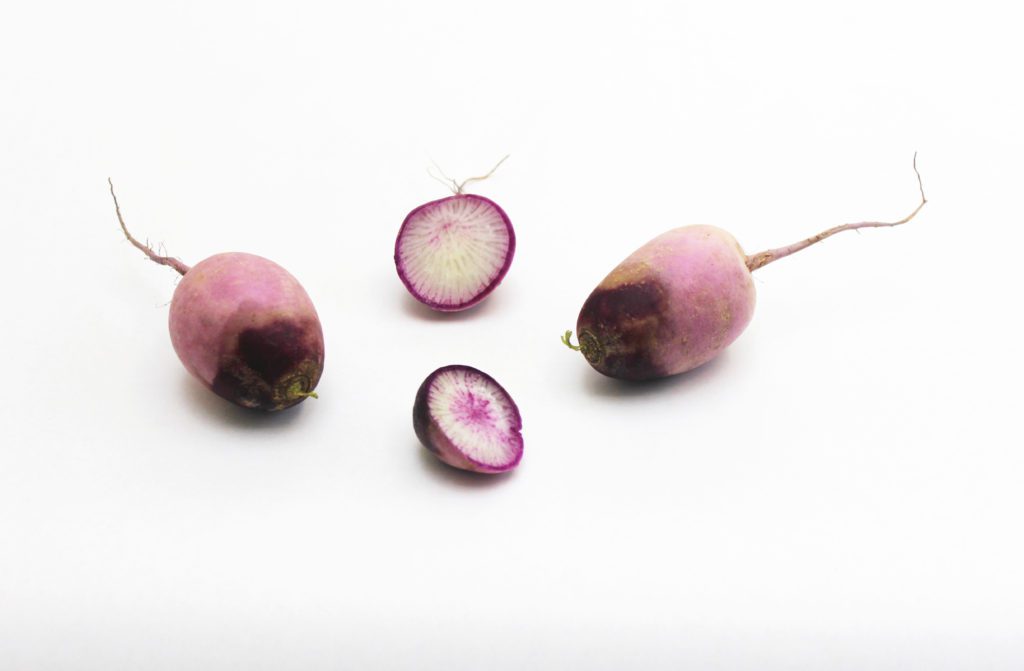
We’re not talking about rudeness, though we’ve seen our fair share of misfit eggplant that would make you blush. We mean when something is literally an “off” color. Think veggies whose rinds are a little sunburned or were exposed to extreme temperatures, affecting little more than the surface peel.
The purple daikon radishes above were firm, tasty, and crisp as can be. Sure, they were a little dark on the outside, but as you can see from the cross-section, not a bit of the discoloration translated to the interior.
The green streaks in these mandarin oranges are rather gorgeous, don’t you think?
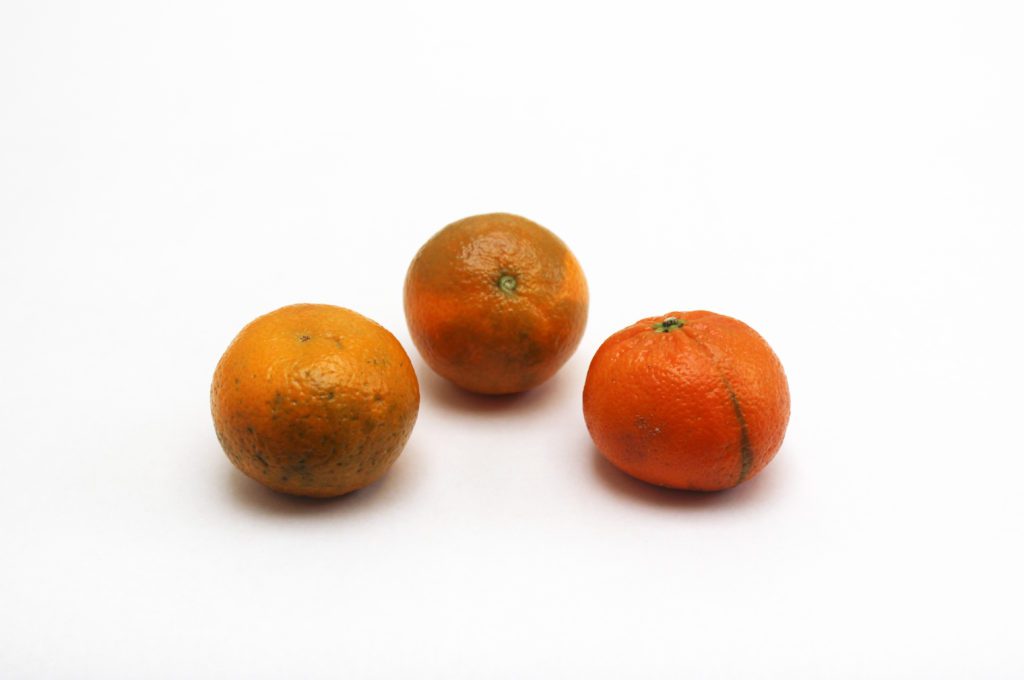
Sadly, they’re enough to make a grocer take a hard pass. Their loss. This citrus is phenomenal inside!
They had some bruises
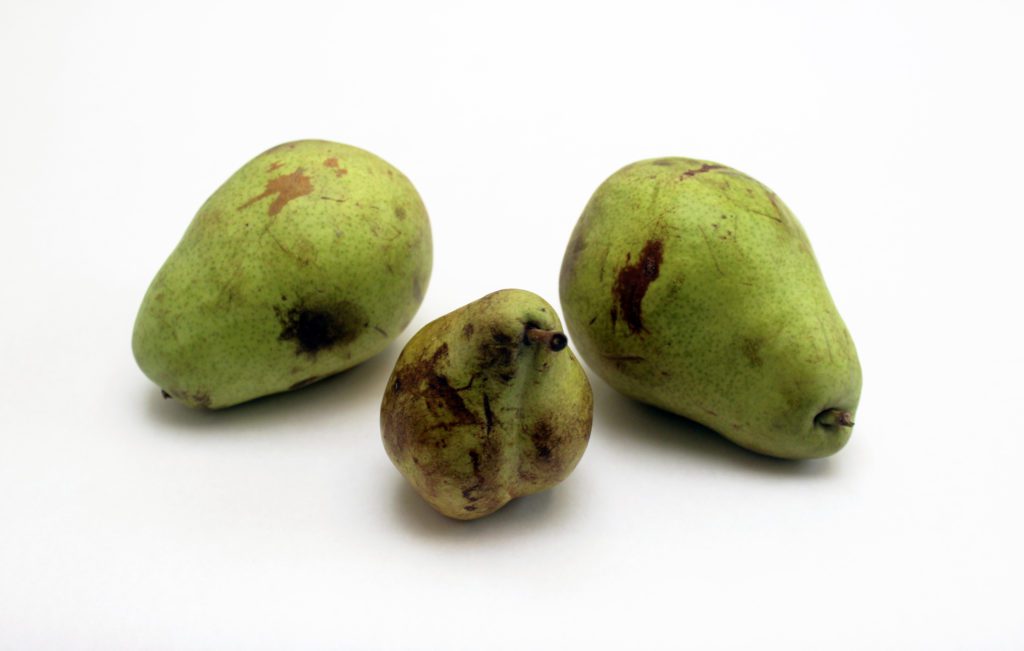
Produce can take quite a journey from the field to your plate. Along the way, bumps and bruises are inevitable, but they don’t need to destine food for the landfill. Most bruised produce we deliver is perfectly fresh beneath the blemish, and just occasionally needs to be cut away to enjoy it.
They had bore holes
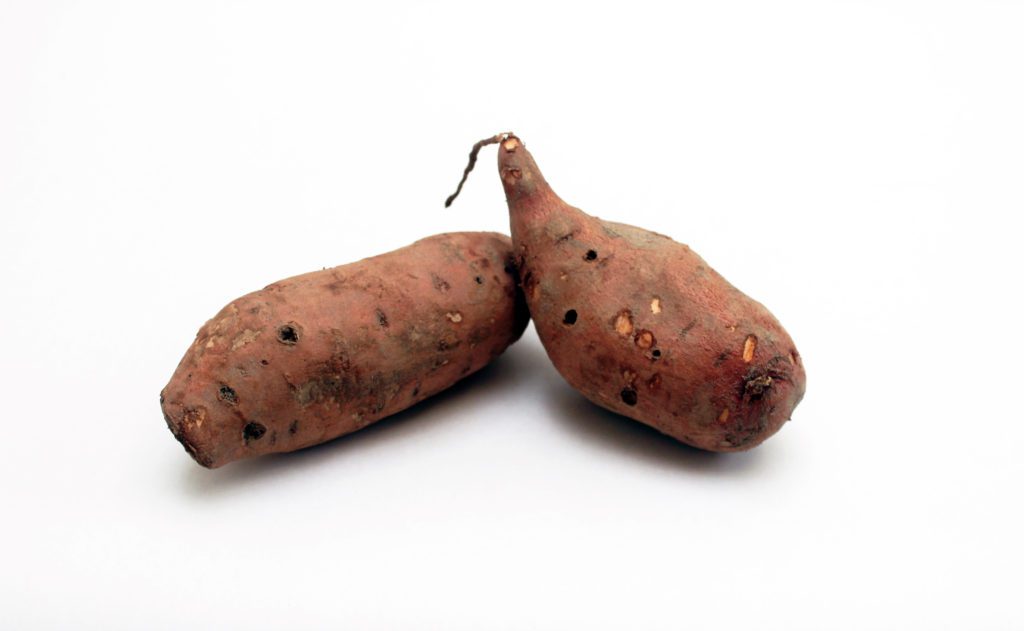
Sometimes tiny pests may have attempted to—how do we put this—sample your goods before they get to you. Don’t worry, it’s completely normal!
Occasionally, little critters in the field may bore holes only a few millimeters deep in a root veggie before giving up and retreating. (Remember, organic produce is grown without the use of pesticides that would kill these creatures off… and be potentially toxic to you.) The resulting holes are perfectly harmless and nothing that a good peel won’t fix.
They were simply excess
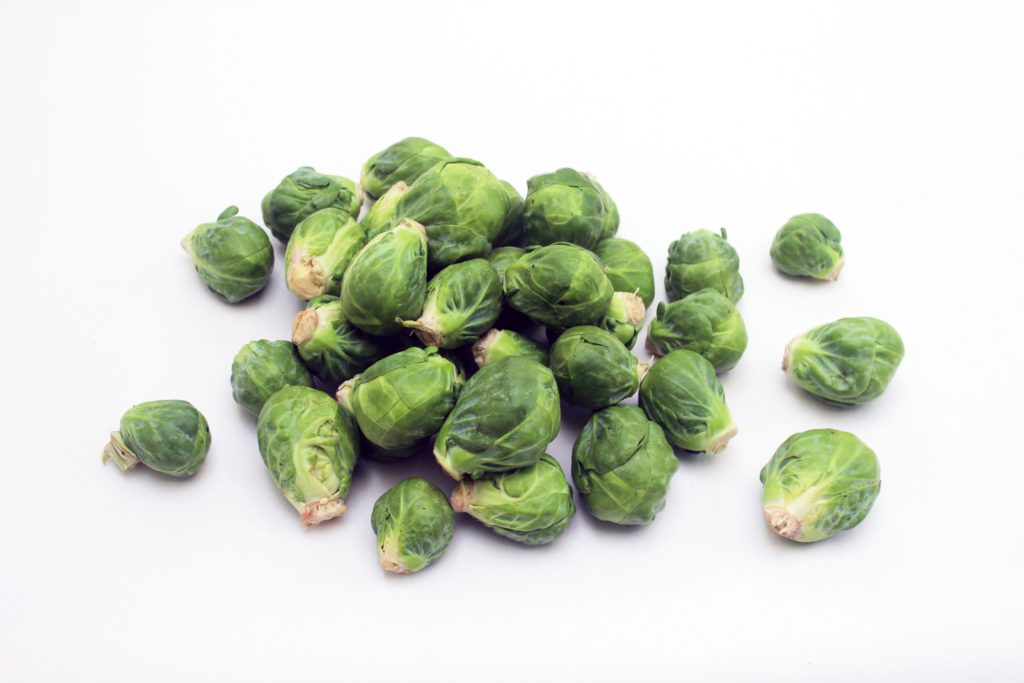
You’ve probably seen this in your box a time or two: A fruit or veggie that’s the perfect size. The perfect shape. Perfectly fresh. And perfectly delicious. What’s the catch?
There isn’t one. Often it’s just a product of human error. Say a school district orders 300 pounds of organic pears for delivery, but they only meant to get 200. It’s not like they can manufacture extra cash at drop-off, so those 100 pounds need a new home ASAP. Another example is when circumstances change from order to delivery, and a store or restaurant that requested produce simply isn’t able to pay for the load.
In both cases, the truck driver has to offload it—fast—before picking up another haul. We work with distribution partners that connect us to these excess situations so we can rescue the food and farmers can get paid for their efforts.
Other times a farmer experiences a bumper crop and their supply simply outpaces demand. Weather events have a way of messing with supply, too. If an unexpected cold snap is on the horizon, farmers have to get sensitive items off the fields before they’re ruined by frost.
Recalls also throw a wrench in the system. When one individual farm or supplier’s crop is identified as unsafe, it makes consumers understandably skittish about buying that type of produce, even if the same item is safely produced on the other side of the country. We carefully vet each partner and triple-check their inventory when recalls hit, so you can always be sure you’re getting the safest produce.
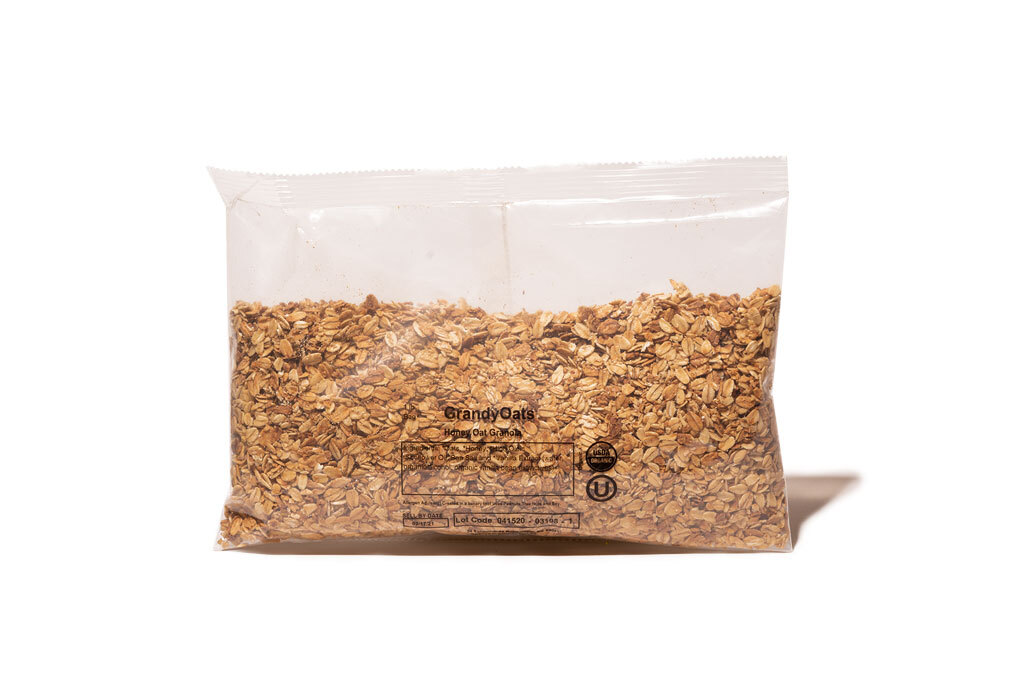
Our store is full of rescued food, too! When we launched The Marketplace in November of 2019, it was a natural evolution of our mission: To find inefficiencies in our food system and turn them into access for all. By getting your grocery shopping done with our Marketplace deals, which include a number of pantry must-haves, shelf stable items, and even more premium organic produce, you’ll save money, avoid a trip to the store, fight food waste, and support the hand-picked suppliers and producers we love. But what makes these items a misfit?
The packaging is outdated or wrong
When popular brands update their packaging, they may still be sitting on a number of items that are still totally delicious but now have incorrect or outdated packaging. We can step in and purchase these items at a discount, so while they won’t have the new, sleek branding, it’s the same delicious product found in the store and you can reap the benefits of those discounted goods.
Other times, the UPC (Universal Product Code—AKA those black and white bars on packaged goods) is either missing or incorrect, so the item simply won’t scan correctly at the register. That’s not an issue for us, so if it has the wrong UPC, we can rescue it and sell it to you at a discount.
The packaging isn’t suitable for retail
No, that doesn’t mean NSFW! There are a number of reasons why your traditional retailer can’t or won’t sell a packaged good. Whether it’s dented or lightly damaged, or it’s short dated (AKA stamped with a “best-by” date that’s fewer than 6 weeks away), these items are still suitable for consumption but not suitable for stores.
Another reason? The item is coming from a bulk processor that may not traditionally sell their item in stores. For example, Grandy Oats granola is sold in bulk to universities and other suppliers and doesn’t actually have packaging that’s fit for a traditional retailer. We work with companies like Grandy Oats to develop sellable packaging (oftentimes it’s a simple package with a name and nutritional information) so we can put it in your boxes. The packaging won’t be pretty but the food is delicious—and rescued!—nonetheless.
Plus, we add unique, hard-to-find items to our store all the time
Beyond rescuing imperfect and overabundant goods, we’re always bringing in items you won’t typically find at your local grocery store. From seasonal surprises to small-batch specialties, discovery is a big part of what makes shopping with us fun. One week you might spot just-picked citrus from a regional farm partner, and the next, something delightfully unexpected—like kiwi berries, those perfectly poppable, smooth-skinned mini kiwis you can eat whole. (If you’ve never tried them, now’s your chance: shop kiwi berries.)
And sometimes, the best finds are a total surprise
We also offer rotating mystery produce picks that let you experience whatever our farm partners are harvesting at their peak. These items shift week to week based on what’s abundant, overgrown, or simply too unique for traditional grocery stores. Think of it as a low-stakes, high-reward way to try something new — you might open your box to crisp, tart apples one week or a perfectly ripe tropical fruit the next. It’s a little bit of surprise, a lot of seasonality, and a fun reminder that good food doesn’t have to fit a script to be delicious.

Comments (9)
Some of us are not sure of the vegetables you are sending.
So is it possible to receive a list in the box of what’s in it?
Hand written just as long as I know whats in there.
Hi Bernadette – we actually have a list of what’s in all of our boxes for the week here: https://www.misfitsmarket.com/pages/whats-in-your-box Let us know if you need help identifying anything. Thanks so much for your business!
I’m still a little unclear on how far the scope of your rescue food goes. It seems like it goes beyond the northeast. If you would provide more detail about your food sources it would help me understand this better. Limes, lemons, oranges have to be from FL or CA right? And avocados?
Yes! So while we do support a lot of local farms during the winter months we do source fruit and vegetables from places like CA, and FL to provide variety to your box.
Kudos for setting up this system to save organic food from waste and get them on our plates! From the farmers to the stores to our plates, it’s a win-win-win-win-win.
Does your use of the local distribution chain affect in any way the food that may be sent or purchased by local food banks?
We actually work directly with organizations such as Philabundance to donate a portion of the produce we rescue to those who are in need.
How do you sign up and do I get to choose the produce I want I’d rather not waste someth8ng I don’t like.
Hi Sharon,
So unfortunately at the moment customization is not an option with our boxes, but it is something we are working on adding in the near future. So be sure to look out for it!